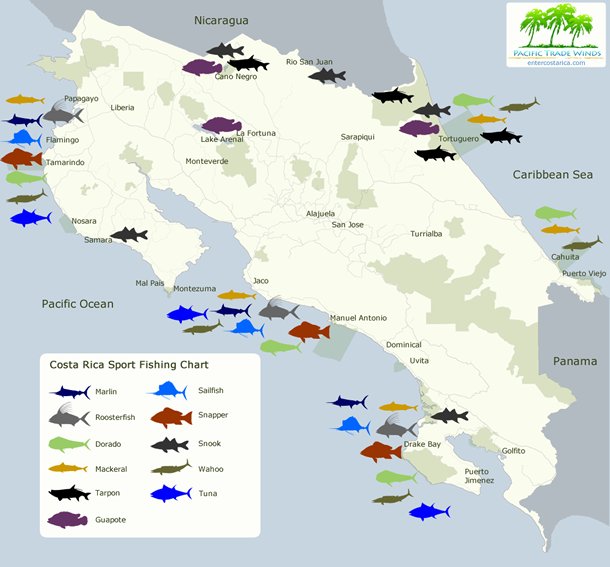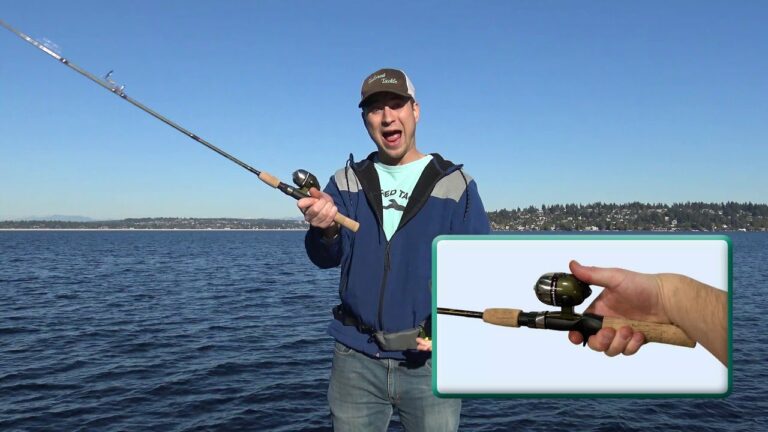Best Fishing Lines For A Baitcaster Reel
Looking for the best fishing lines for a bait caster reel? Look no further! We have the ultimate solution for you. When it comes to baitcaster reels, choosing the right fishing line is crucial for maximizing your fishing experience.
The line directly impacts your casting distance, control, and overall performance. So, it’s essential to find the perfect balance between strength, sensitivity, and manageability. In this article, we’ll explore some top-notch options that will elevate your baitcasting game. Let’s dive in!
Best Fishing Lines for a Baitcaster Reel:
Picking the right fishing line is essential for baitcasting success. It impacts accuracy, strength, and overall performance. With numerous options available, finding the best line for your baitcaster reel can be overwhelming. Let’s explore top fishing lines for baitcasters and how they enhance your experience.
Monofilament Fishing Lines:
One of the most popular choices for bait caster reels is the monofilament fishing line. Made from a single strand of nylon, monofilament lines offer several advantages that make them a favorite among anglers. Here’s why you should consider using monofilament lines for your bait caster reel:
Versatility and Easy Handling
Monofilament lines are highly versatile and work well for various fishing techniques. They are great for casting topwater lures, flipping jigs, or throwing spinnerbaits. Monofilament lines are easy to handle and cast, making them suitable for both beginners and experienced anglers.
Shock Absorption and Knot Strength
Monofilament lines absorb shocks well, allowing them to endure sudden strikes without breaking. They also have strong knots that hold firm even under intense pressure. These qualities make monofilament lines a reliable option for bait caster reels.
Good Visibility and Low Memory
Monofilament lines provide clear visibility, enabling better detection of subtle line movements and bites. They also have low memory, preventing coiling and twisting, resulting in fewer tangles and smoother casting.
Braided Fishing Lines
Braided fishing lines are popular among anglers for good reason. They consist of tightly woven fibers, making them strong and durable. This is why they are a great choice for baitcaster reels.
Superior Strength and Sensitivity:
Braided lines are stronger than monofilament lines of the same thickness, which means you can use a thinner line without sacrificing strength. This thin diameter also improves sensitivity, allowing you to feel even the smallest nibble or movement.
Zero Stretch and Increased Hook-Setting Power
Braided lines have no stretch, which means instant hook-setting power and an improved hook-up ratio. They offer direct sensitivity for quick bite detection and response.
Longevity and Durability
Braided lines are highly durable and last longer than other fishing lines. They withstand abrasion from rocks, debris, and toothy fish, making them ideal for different fishing environments. Quality braided lines are a cost-effective investment.
Fluorocarbon Fishing Lines
Fluorocarbon fishing lines have gained popularity in recent years due to their unique properties and versatility. These lines are made from a dense material known as polyvinylidene fluoride (PVDF). Let’s explore why fluorocarbon lines are a great choice for baitcaster reels:
Low Visibility and Abrasion Resistance:
Fluorocarbon lines are great when visibility is important. They are almost invisible underwater, thanks to their similar refractive index to water. This stealthy quality improves your chances of catching cautious fish. Fluorocarbon lines also resist abrasion well, making them ideal for fishing in areas with lots of obstacles.
Sensitivity and Fast Sink Rate:
Fluorocarbon lines are highly sensitive, helping you detect subtle strikes and changes in the bottom structure. The low stretch improves feedback, ensuring you feel even the lightest bites. They also sink quickly, allowing you to reach the strike zone faster.
UV and Chemical Resistance:
Fluorocarbon lines possess superior resistance to UV rays and chemicals when compared to other fishing lines. This exceptional resistance increases the longevity of your fishing line, guaranteeing optimal performance in a wide range of conditions.
Choosing the Right Pound Test:
When choosing a fishing line for your baitcaster reel, it’s important to consider the pound test. The pound test indicates the maximum weight the line can handle before breaking. The right pound test to choose depends on the fish species and the fishing conditions. Here’s a basic guideline:
Light Tackle Fishing:
To catch small to medium-sized fish or use finesse fishing techniques like drop shotting or finesse jigging, use a 6 to 10-pound test line. Lighter lines offer greater sensitivity and enable longer casts.
Moderate Tackle Fishing:
When aiming for bigger fish or fishing in situations with moderate cover, it is recommended to use a line with a medium pound test between 10 and 17 pounds. This range provides a well-rounded combination of strength and sensitivity.
Heavy Tackle Fishing:
When pursuing large, hard-fighting species or fishing in heavy cover, it is recommended to use a high-pound test line ranging from 17 to 25 pounds. These lines offer the necessary strength to handle aggressive fish and endure rugged environments.
Tips for Maximizing Performance:
To get the best performance out of your bait caster reel and fishing line, consider the following tips:
Proper Line Spooling:
To prevent twists and tangles, it is important to properly spool your fishing line onto the reel. Follow the instructions provided by the manufacturer for the correct spooling technique.
Regularly Check for Wear and Tear
Inspect your fishing line regularly for signs of wear, such as fraying or discoloration. Replace compromised lines to prevent unexpected breakage.
Match Line Diameter to Reel Capacity
Choose a fishing line with a diameter that matches your reel’s recommended capacity. This ensures optimal casting performance and prevents line overfill or underfill.
Maintain Appropriate Drag Settings
Adjust the drag on your baitcaster reel according to the fishing conditions and the fish species you’re targeting. A properly set drag prevents line breakage during intense fights.
Practice Casting Techniques
Baitcaster reels require a specific casting technique to avoid backlash and ensure accurate casts. Practice your casting technique to improve control and distance.
Best Fishing Line For Baitcaster | Top 5 Baitcaster Fishing Line in 2023
Faqs for Best Fishing Lines For A Baitcaster Reel:
1. What is the best fishing line for a bait caster reel?
The best fishing line for a bait caster reel will depend on various factors, including your fishing style, target species, and personal preferences. However, some popular options include monofilament, fluorocarbon, and braided lines.
2. What are the advantages of using a monofilament line on a baitcaster reel?
Monofilament line is a popular choice for bait caster reels due to its versatility. It offers good casting distance, excellent shock resistance, and easy knot tying.
Additionally, monofilament lines tend to float on water, making them ideal for topwater fishing applications.
3. Why should I consider using a fluorocarbon line on a baitcaster reel?
The Fluorocarbon line is known for its invisibility underwater, making it a great option for finicky fish species. It has low stretch, allowing for better sensitivity and hook-setting power.
Fluorocarbon lines also have excellent abrasion resistance, making them suitable for fishing in cover or around structures.
4. What are the benefits of using braided line on a baitcaster reel?
Braided line offers several advantages when used on a baitcaster reel.
It has a thinner diameter compared to monofilament and fluorocarbon lines of the same strength, allowing for increased line capacity and longer casting distances.
Braided lines also have minimal stretch, providing exceptional sensitivity and immediate hook sets.
5. Can I use a combination of fishing lines on a baitcaster reel?
Yes, you can use a combination of fishing lines on a bait caster reel by using a backing line and a main line. This technique allows you to maximize the benefits of different fishing lines.
For example, you can use a thin braided backing line for increased line capacity and tie on a fluorocarbon or monofilament leader for better invisibility.
6. What line weight should I use for a baitcaster reel?
The ideal line weight for a baitcaster reel depends on various factors, such as the size of the fish you are targeting and the fishing conditions.
However, for general freshwater fishing, line weights ranging from 10-20 pounds are commonly used. For heavier saltwater applications, line weights can go up to 50 pounds or more.
7. How often should I change the fishing line on my baitcaster reel?
The frequency of line replacement depends on several factors, including how frequently you fish and the fishing conditions.
As a general guideline, it is recommended to change your fishing line at least once a year or more frequently if it shows signs of wear, such as fraying, loss of strength, or reduced casting performance.
Final Thoughts
To choose the best fishing line for a baitcaster reel, consider factors like strength, durability, sensitivity, and casting distance. Popular options include fluorocarbon, monofilament, and braided lines, each with their pros and cons. The best line will vary for each angler, but knowing the types and their characteristics will help make an informed decision.


